This post may contain affiliate links. Please read our disclosure policy.
Gochujang Chicken layers on the flavor from gochujang, hoisin, and vinegar for rich, balanced heat. This version sears, simmers, and sticks: no watery sauces here!
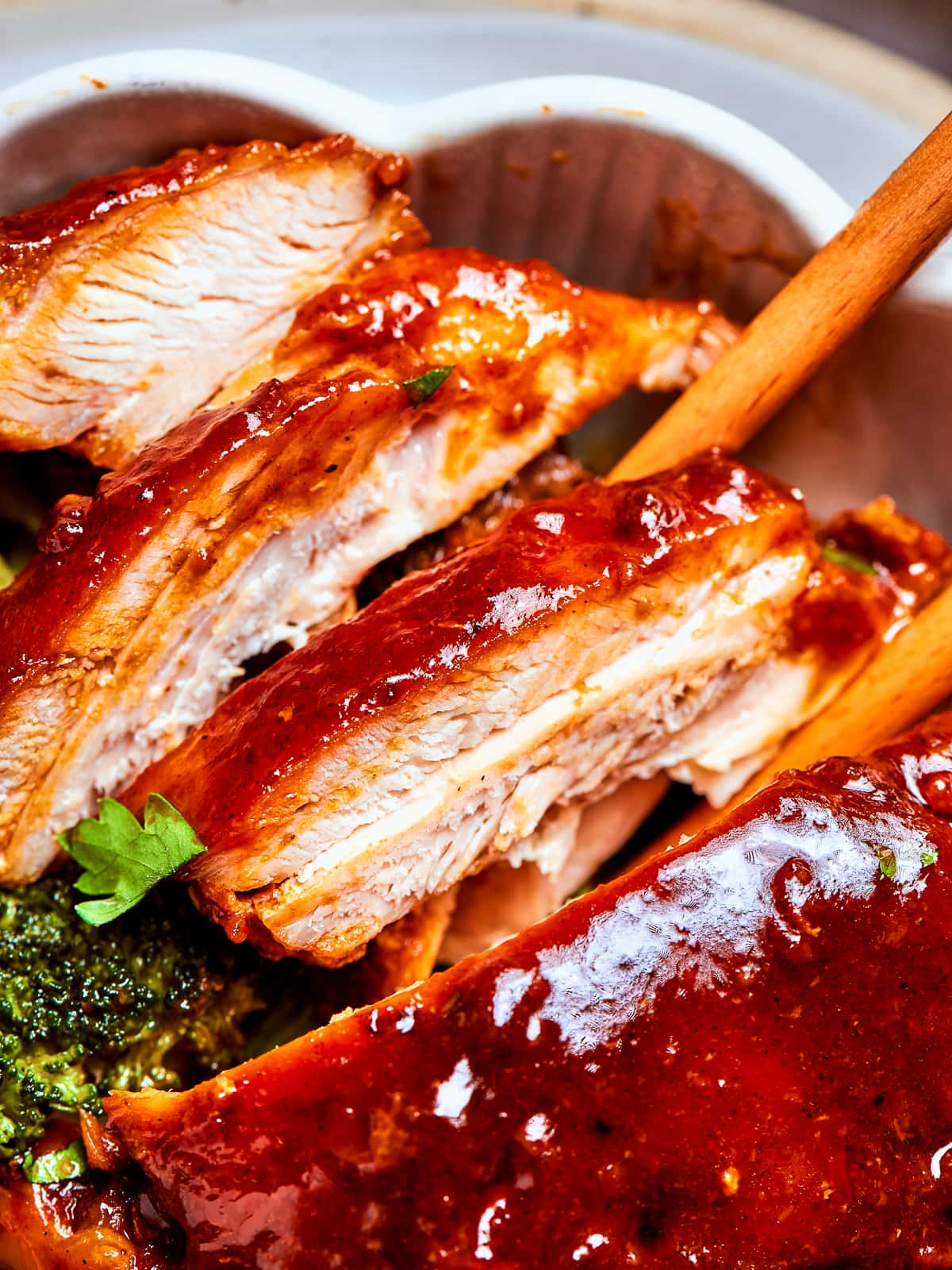
What does gochujang chicken taste like? It tastes a little sweet, a little spicy, and there’s an umami theme. The hoisin gives the dish richness, the vinegar makes it bright, and the gochujang brings some firecracker heat. It’s bold, and dare I say, fun!
This recipe feels like something you’d get at a modern Korean restaurant, but you can make it in 30-minutes at home. I make this gochujang chicken two or three times a month! The sauce hits hard and clings to every bite.
Looking for more saucy favorites? Try my baked barbeque chicken breast recipe, this hungarian chicken paprikash, or fan-favorite sweet and spicy wings next. Then come back and make this again!
Why You Will Love This
- A bold sauce! Sweet, spicy, and deeply umami. This isn’t your standard soy sauce glaze. Hoisin brings the sweetness, rice vinegar the acidity, and gochujang provides layered heat. You get a complex flavor without dozens of ingredients.
- Easy recipe for moist, flavorful chicken. There is no need for spice rubs or marinating the chicken ahead of time. This recipe makes moist chicken in a fraction of the time!
- Your newest flexible favorite. Serve this dish over rice, on a cucumber salad, or toss it with noodles like my easy Thai peanut chicken noodle stir fry. Make it vegetarian! Any way you like it!
Table of Contents
Ingredients & Substitutions

- Chicken: This recipe calls for boneless skinless chicken breast and chicken thighs. Yes, you can use another cut of chicken for this recipe. In fact, chicken tenders also work nicely and cook even more quickly! Removing the skin allows for the flavors to permeate the chicken meat and give you a nice sear.
- Onion Powder: Onion powder is optional, but I love the added flavor to the chicken.
- Gochujang: This fermented Korean chili paste adds heat, umami, and a touch of sweetness. Different brands of gochujang paste vary in spiciness, so taste it first before adding any extra or topping with red chili flakes.
- Hoisin: A few tablespoons of thick sweet-savory hoisin sauce balances the heat of the gochujang and gives some added richness.
- Rice Wine Vinegar: Rice wine vinegar adds some brightness. You can use white wine vinegar or unseasoned rice vinegar if that’s what you have in your pantry! You could also swap rice vinegar with mirin for a milder, sweeter version, both are made from fermented soybeans.
- Onion: I recommend using a sweet or yellow onion in this dish for the most authentic flavor. Slice the onions in half through the root and then peel each half. Place the cut side down on a cutting board and slice into slivers. Save your green onions and sesame seeds for garnish and your shallots for some chicken with shallots,
- Baby Bella Mushrooms: Remove the stems on your baby bella mushrooms and slice thinly so that they cook quickly!
- Baby Bok Choy: My biggest advice with bok choy is to cut the root end off. If yours are on the larger side, I recommend slicing them in half longways. Rinse or dip the bok choy in cold water and set to the side to drain.
- Broccoli: Cut the broccoli into bite-sized florets so that it will cook evenly.
See the recipe card for full information on ingredients and quantities.
Variations
- Halve the sauce for appetizers. This recipe makes a generous amount of gochujang sauce. This is great if you plan to serve the chicken over rice, as the rice will absorb some of the sauce and really round it out. BUT, if you plan to serve this on its own or as more of an appetizer, feel free to halve the sauce recipe (directions stay the same). You could also add a cornstarch slurry to make it extra, extra thick.
- Bone-in is an option. Sometimes I make this recipe with only bone-in thighs. They taste even better but they take a fair amount longer to cook! Plan in advance to add time to your stovetop braise. Sometimes I even pre-sear them and then simmer them covered for longer. Ensure you cook them to an internal temperature of 165 degrees Fahrenheit rather than relying on the times listed in the recipe.
- Try it with tofu or tempeh. Use extra-firm tofu, pressed, cubed, and pan-fried before you add the sauce. You could also use tempeh! Slice it thin and sautée it for a vegetarian take!
Professional Tips
- Don’t skip the gochujang, it’s the star of the show. If you love Korean food or Korean barbecue, you’ll really love this sauce. I found a bottle at Target so I’m sure it’s fairly easy to find these days at standard grocery stores near the soy/teriyaki sauce section (or get gochujang paste on Amazon!).
- Be sure to cut your chicken into uniform, bite-sized pieces. This ensures that it cooks at an even rate! If you have a larger and smaller chicken piece in the same pan, the smaller one will dry out before the larger piece has cooked through.
- Be careful not to crowd the pan! Depending on the size of your skillet or wok you might need to add the bok choy in stages. Steam, toss with tongs, then add more in batches.

How to Make Gochujang Chicken
Further details and measurements can be found in the recipe card below.
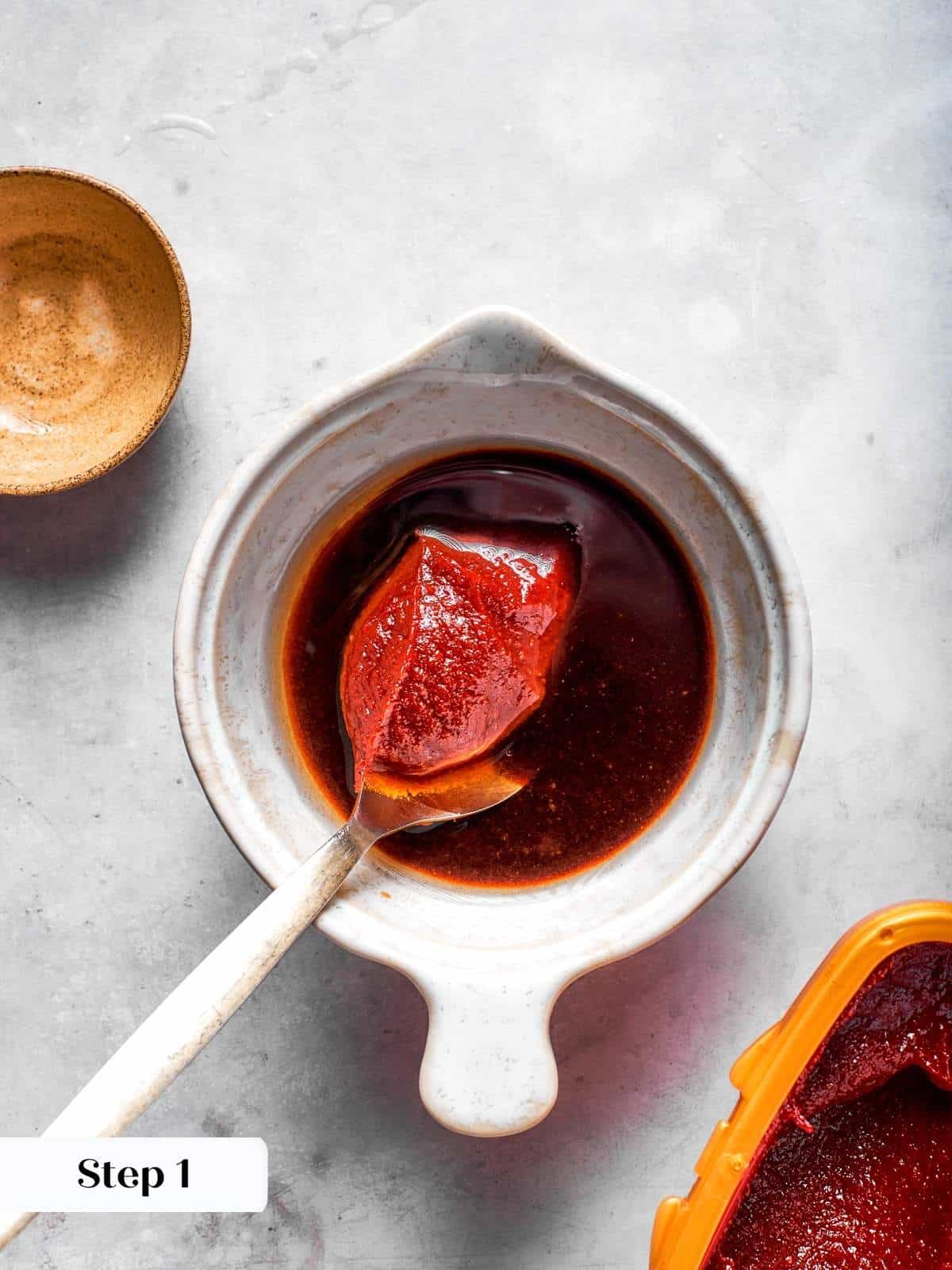
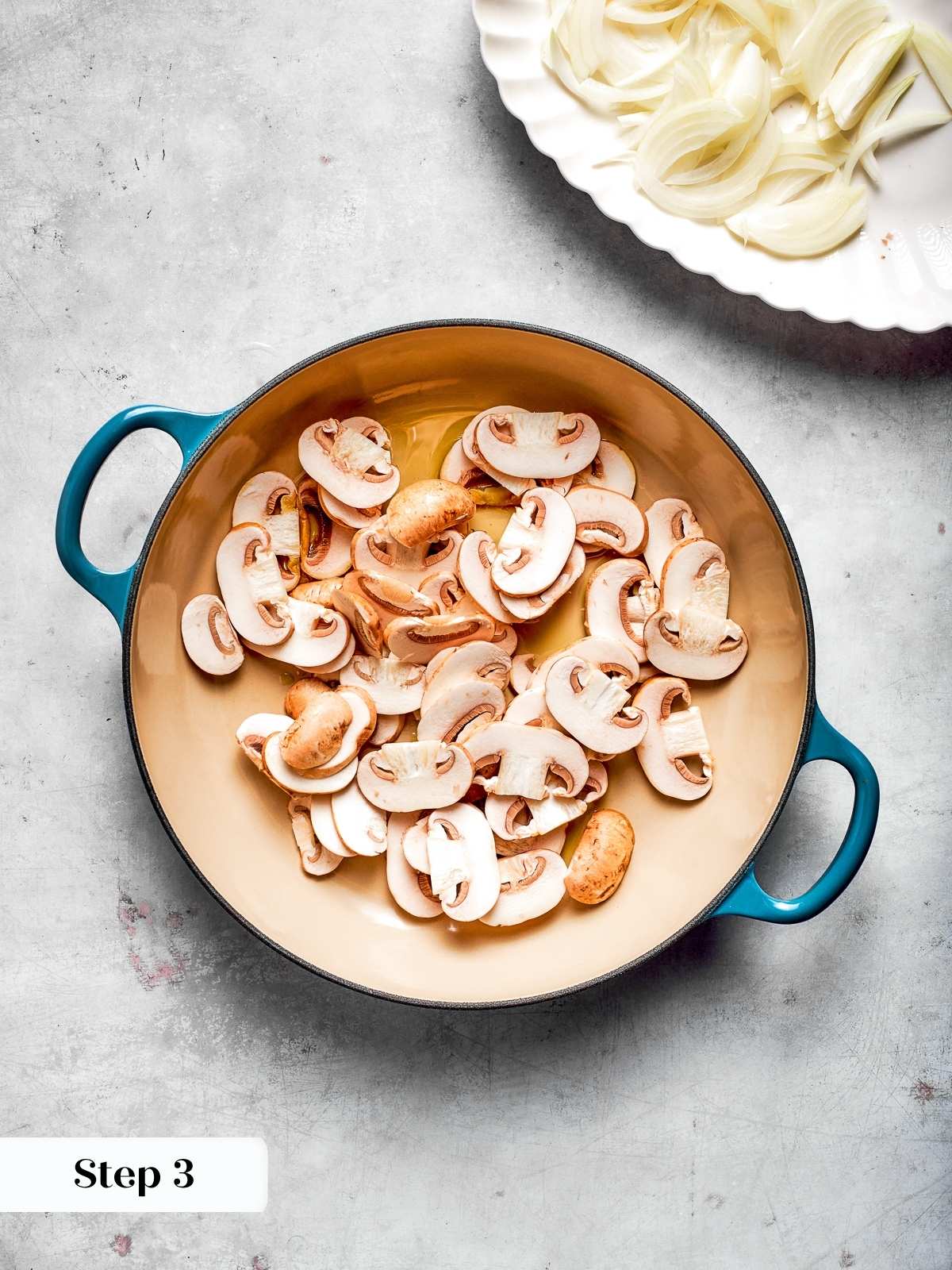
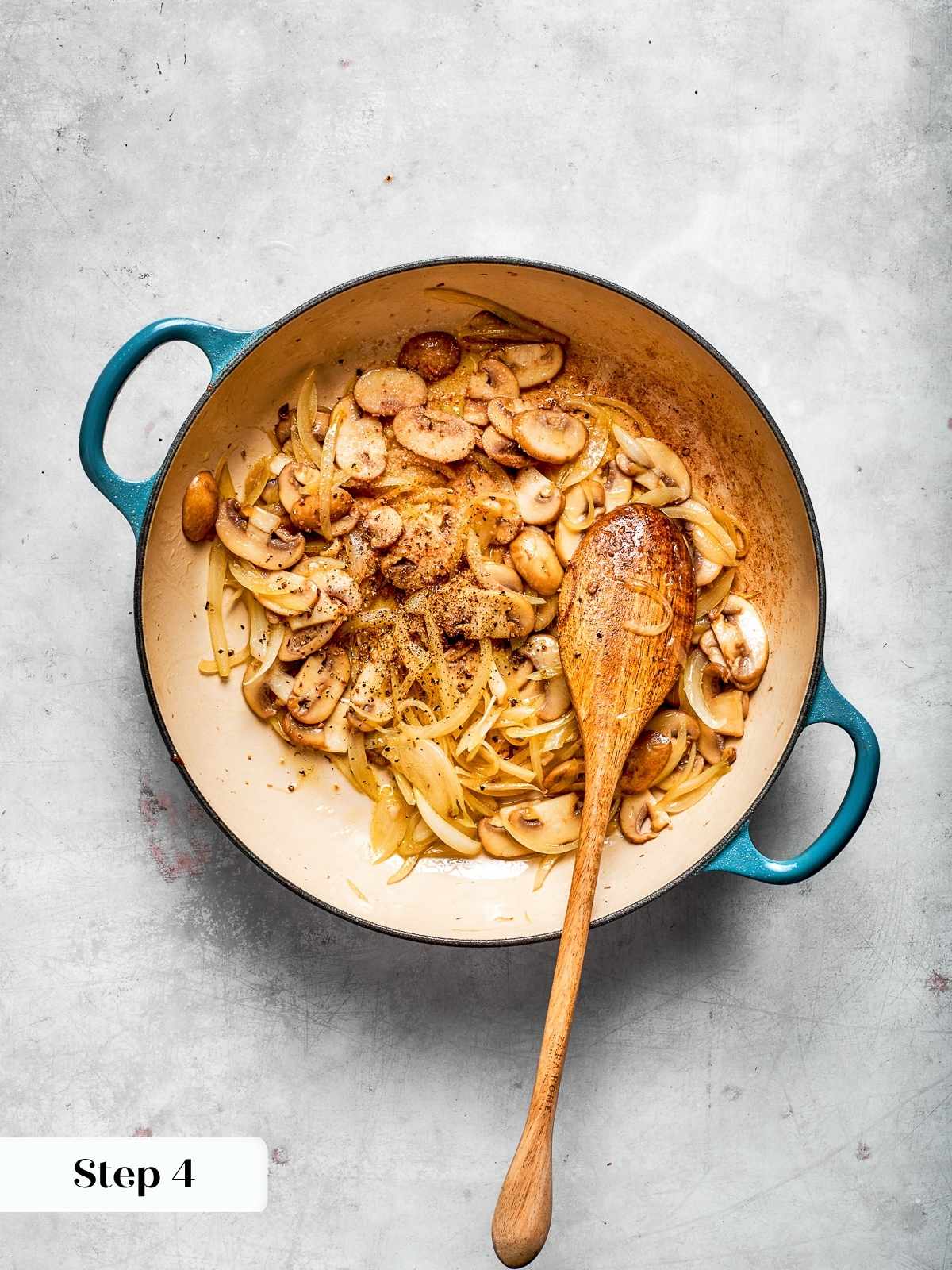
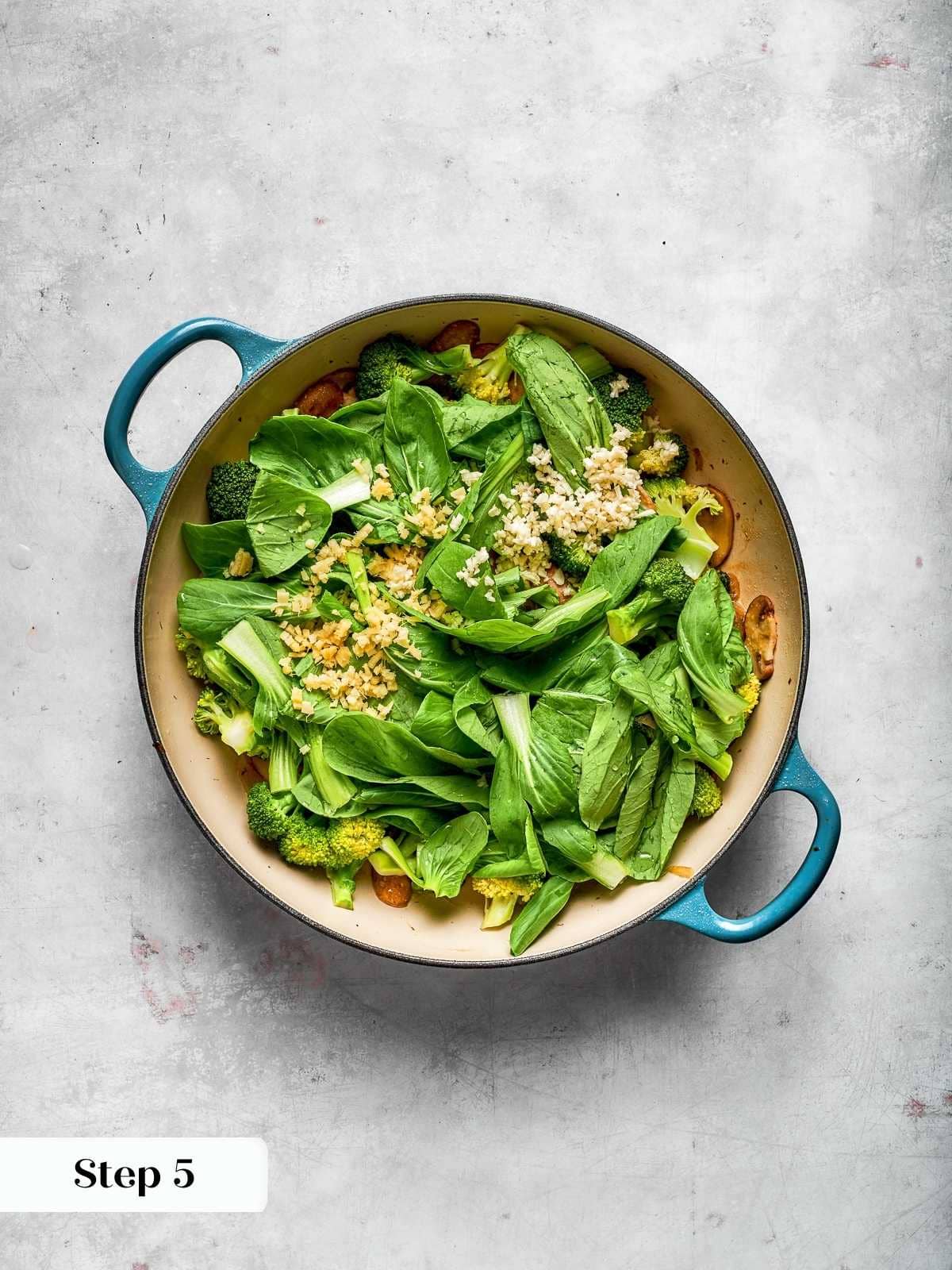
Mix the Sauce
Step 1: In a small bowl combine gochujang, hoisin sauce, and rice wine vinegar. Stir or whisk together and set aside. (Photo 1)
Taste your gochujang and hoisin first. Some brands are saltier or sweeter. Adjust salt to your taste!
Prep the Vegetables
Step 2: Slice the onions in half through the root and then peel each half. Place the cut side down on a cutting board and slice into slivers. Remove the stems from the mushrooms and slice into slivers as well.
Cook the Veggies
Step 3: In a large sauté pan, add a tablespoon of vegetable oil or olive oil and cook sliced mushrooms over medium-high heat until they take on a little color. (Photo 2)
Step 4: Add onions to the pan, adding more oil if needed. Reduce the heat to medium and sauté until softened. Season with salt and pepper. While those cook, prep the broccoli (into florets) and baby bok choy (slice in half lengthwise if large). Rinse and drain. (Photo 3)
Step 5: Add broccoli and a splash of water. Cover and steam until just tender. Add garlic, ginger, then bok choy in batches, tossing and seasoning as needed. (Photo 4)
Sear and Sauce the Chicken
Step 6: Once you are done adding the vegetables, use the cutting board to trim any excess fat from the thighs and cut breasts into thigh sized chunks.
Pat the chicken dry with paper towels for the best browning before seasoning.
Step 7: Season the chicken with kosher salt and ground ginger and ground onion.
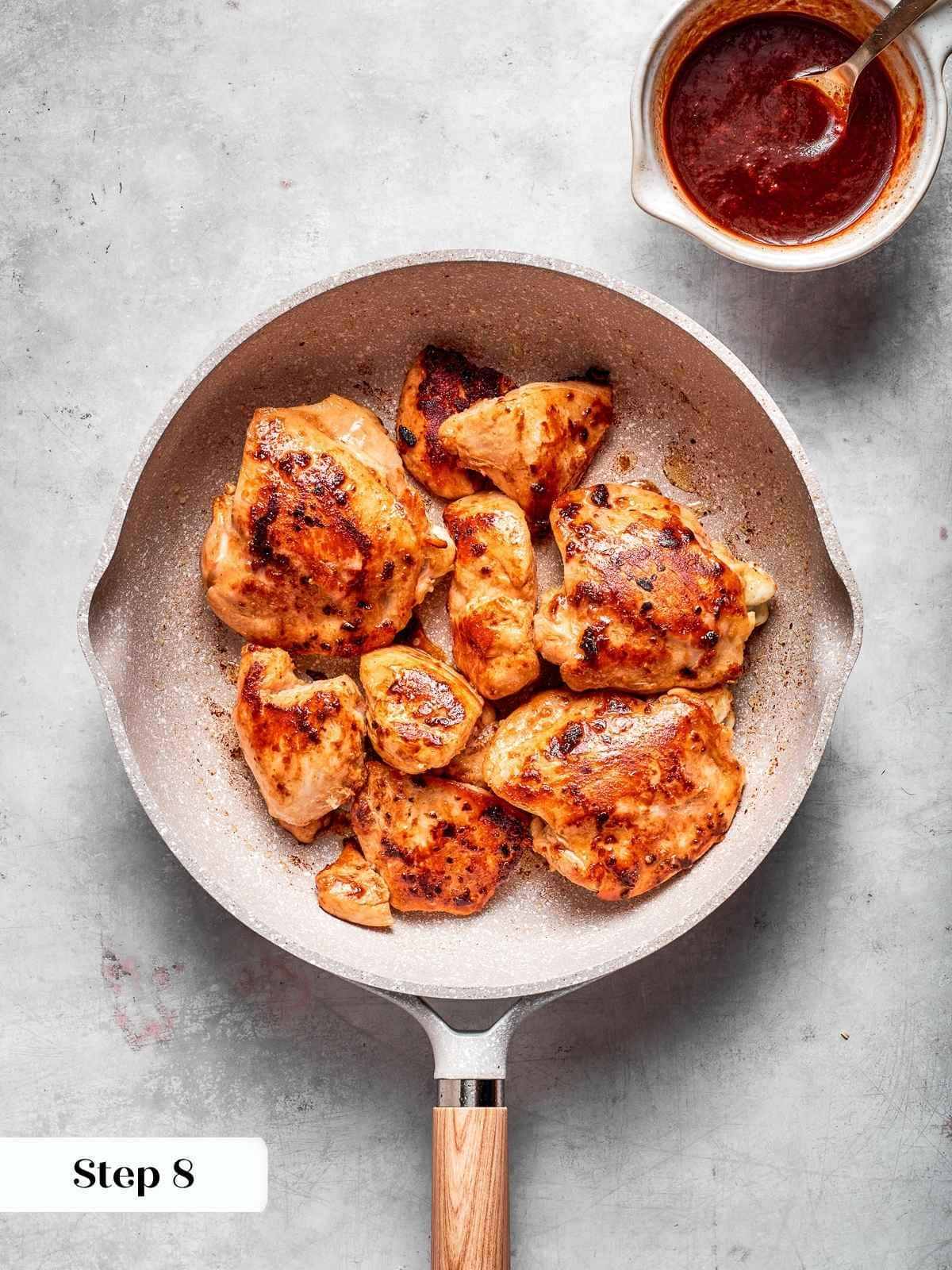
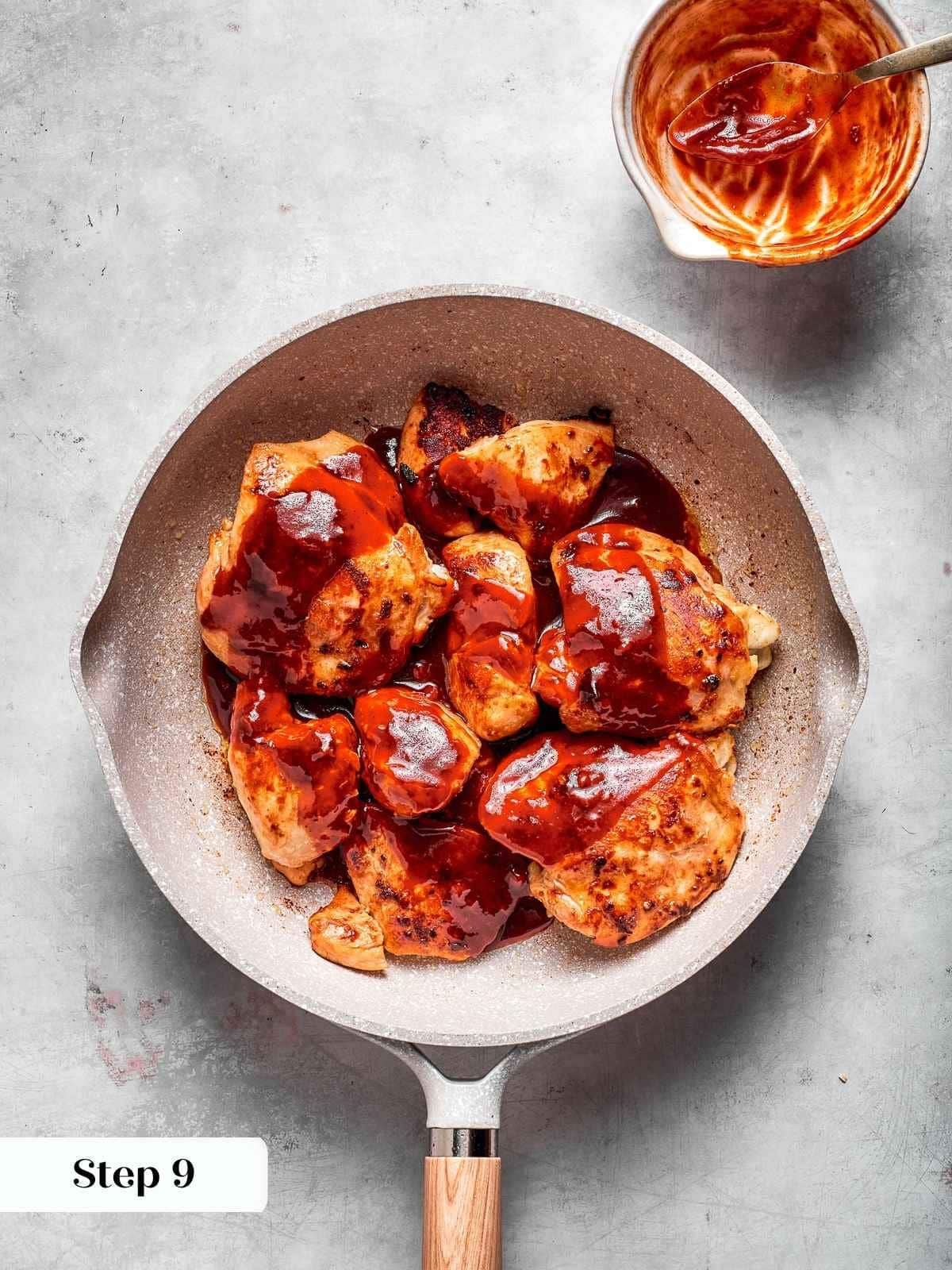
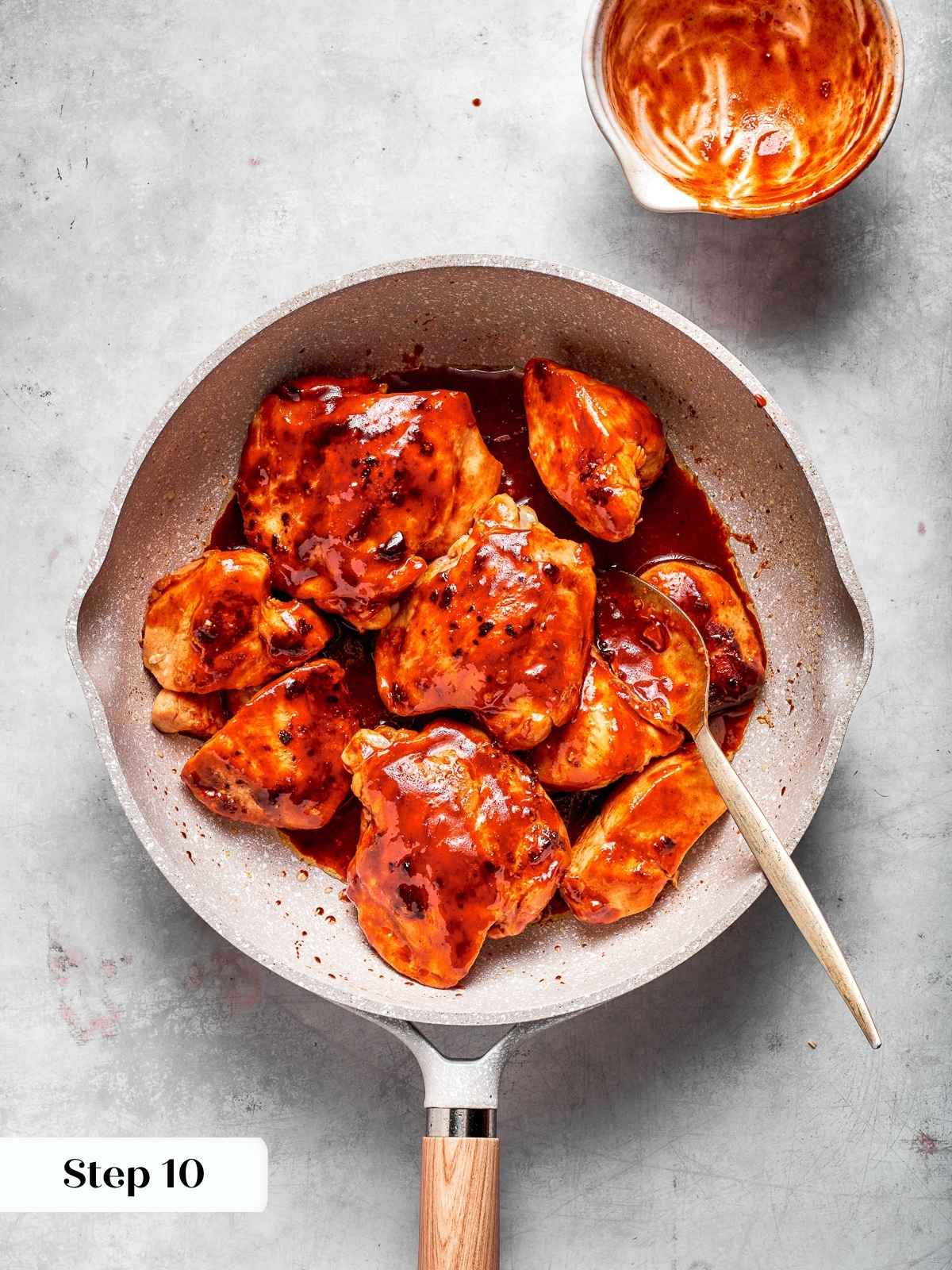
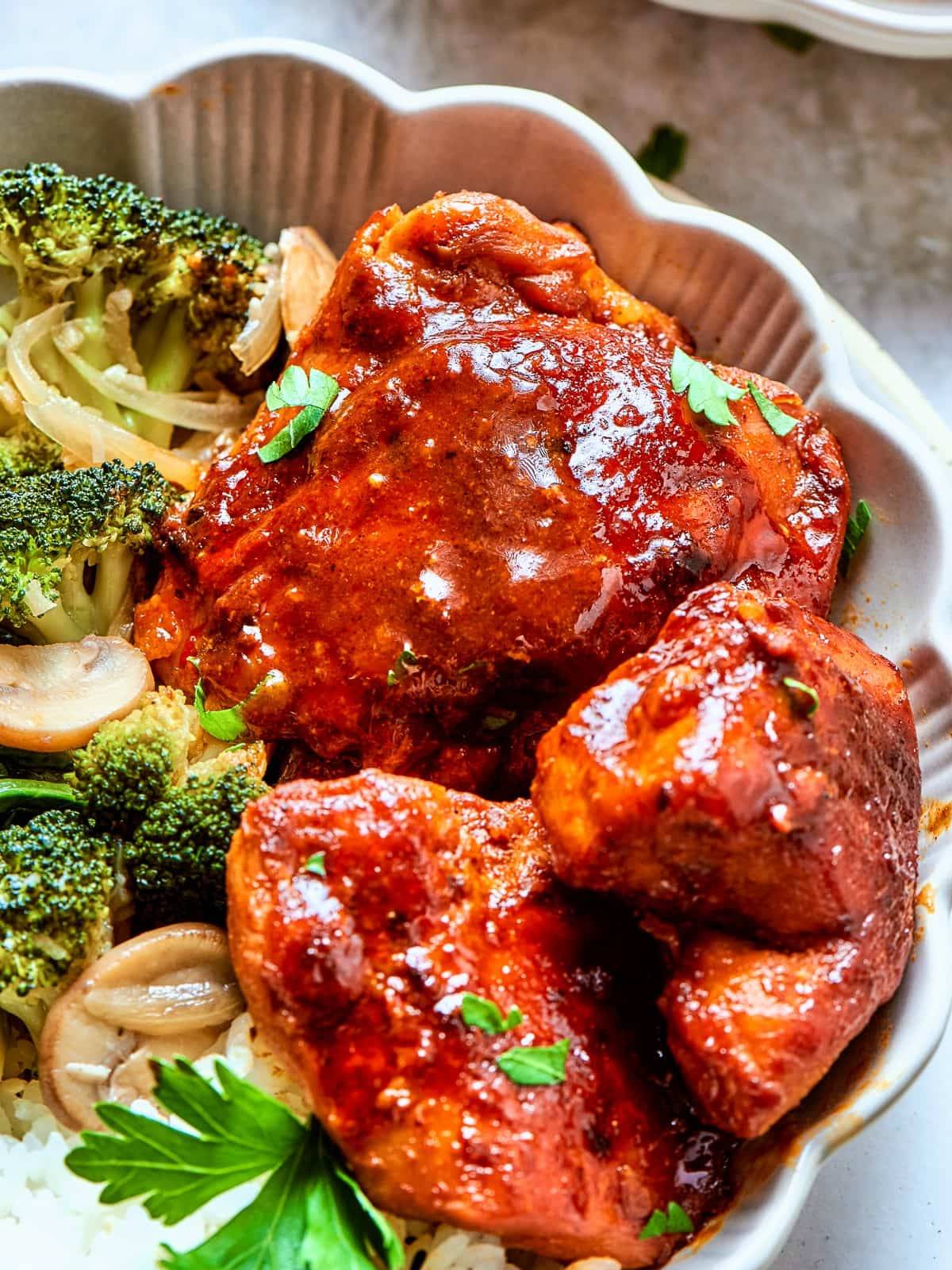
Step 8: In a large sauté pan, heat 1 tablespoon vegetable oil or olive oil over medium-high heat. Once the oil is hot, add the chicken to the pan trying to keep at least an inch between each piece. Brown on the first side then flip and brown on the other side. (Photo 5)
Step 9: Once the second side has browned add the sauce over top of the chicken. (Photo 6)
If there are browned bits stuck to the pan, splash in a tablespoon of water and gently scrape to deglaze before adding the sauce.
Step 10: Flip and stir the chicken so that both sides are coated. Cover the pan, reduce heat to low or medium-low and cook until chicken is cooked through. Serve with sautéed vegetables, brown rice and the pan sauce. (Photo 7)
Let the chicken rest for 5 minutes before serving to help the juices redistribute. You can also add a touch of sesame oil or fresh ginger right before serving!
Chef Lindsey’s Recipe Tip
You have two choices with this recipe. You can either make it fast in 2 pans or slower in 1 pan because you’ll need to start the veggies first then use the same pan to make the chicken. Some days, extra dishes seem worse than taking extra time. Then, there are those days when time is of the essence and the dishwasher is your best friend. It’s your call. Either way, the cooking time is short—under 30 minutes total, with no need to bake. I call that a win!
Recipe FAQs
Yes! After opening, gochujang should be kept in the refrigerator. Keep it in a sealed container, and it should last you a few months!
I recommend serving this dish with sauteed veggies and a side of brown rice or quinoa pilaf to soak up the sauce. It’s also great over salad with bean sprouts, shredded cabbage, and a drizzle of honey. Noodles or lettuce cups are also great options!
Store leftover chicken in an airtight container in the fridge for 3 to 5 days. You can freeze the leftovers for up to 3 months in a freezer-safe container. To reheat, add the pieces of chicken and remaining sauce to a covered baking dish and place in a 325°F oven for about 20 minutes or until heated through.
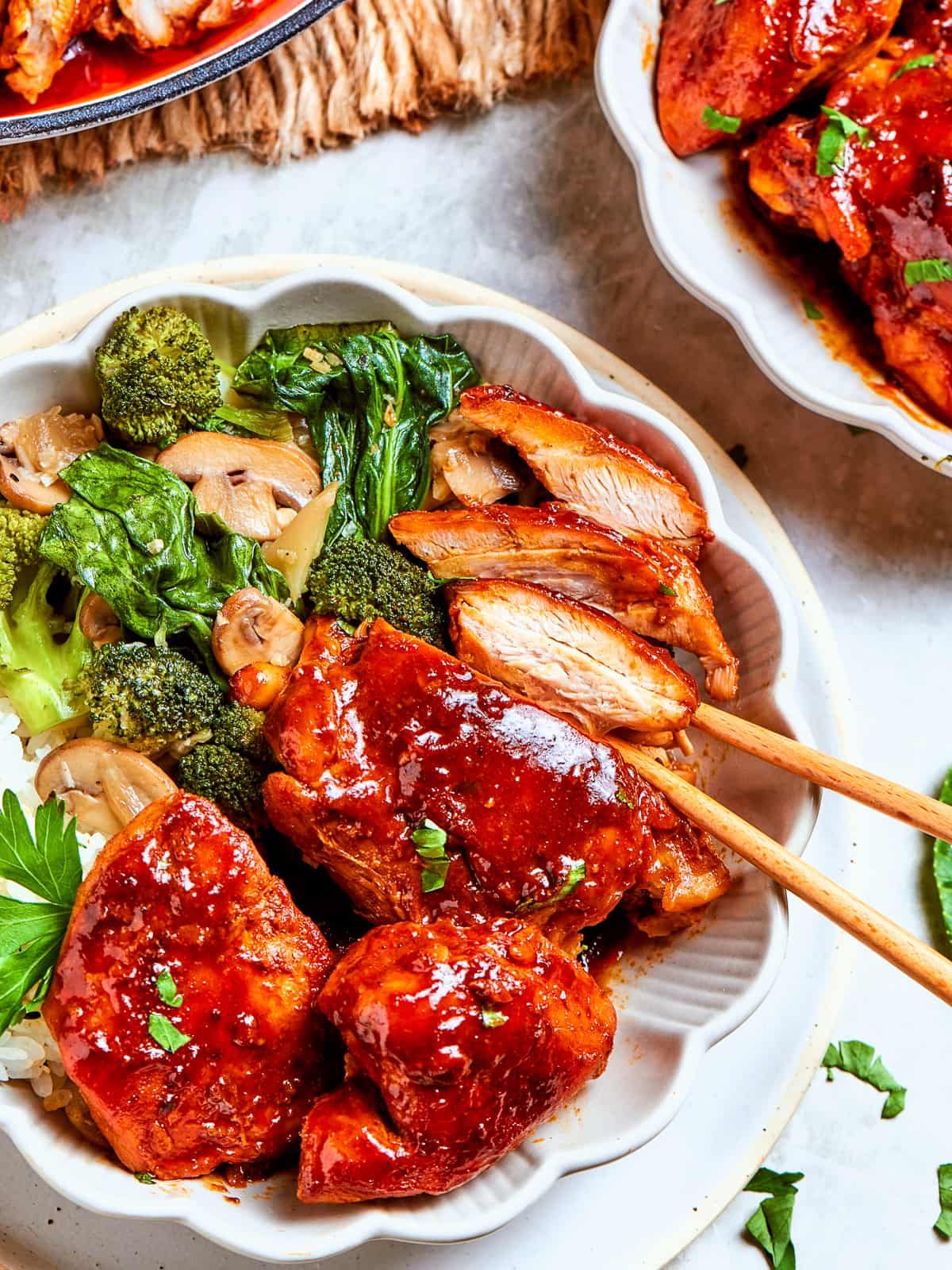
Recommended Chicken Recipes
Date Night
BBQ Chicken Recipe
Date Night
Chicken in White Wine Sauce
Date Night
Hungarian Chicken Paprikash
Date Night
Chicken with Shallots
If you tried this recipe and loved it please leave a 🌟 star rating and let me know how it goes in the comments below. I love hearing from you; your comments make my day!

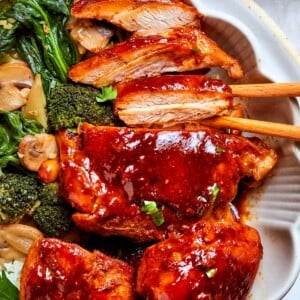
Gochujang Chicken
Ingredients
For the chicken:
- 1 pound chicken thighs and breasts; boneless and skinless
- 1 teaspoon ground ginger
- 1 teaspoon onion powder
- kosher salt to taste
- 2 teaspoons gochujang
- 3 tablespoons hoisin
- 1 tablespoons rice wine vinegar
For the stir-fry:
- 1 medium onion
- 8 ounces baby bella mushrooms
- 2 heads broccoli
- 1 ½ tablespoons garlic minced
- 2 teaspoons fresh ginger minced or store-bought paste
- 6-9 baby bok choy
- vegetable oil for sautéing
Instructions
Mix the Sauce
- In a small bowl combine gochujang, hoisin sauce, and rice wine vinegar. Stir or whisk together and set aside.
Prep the Vegetables
- Slice the onions in half through the root and then peel each half. Place the cut side down on a cutting board and slice into slivers. Remove the stems from the mushrooms and slice into slivers as well.
Cook the Veggies
- In a large sauté pan, add a tablespoon of vegetable oil or olive oil and cook sliced mushrooms over medium-high heat until they take on a little color.
- Add onions to the pan, adding more oil if needed. Reduce the heat to medium and sauté until softened. Season with salt and pepper. While those cook, prep the broccoli (into florets) and baby bok choy (slice in half lengthwise if large). Rinse and drain.
- Add broccoli and a splash of water. Cover and steam until just tender. Add garlic, ginger, then bok choy in batches, tossing and seasoning as needed.
Sear and Sauce the Chicken
- Once you are done adding the vegetables, use the cutting board to trim any excess fat from the thighs and cut breasts into thigh sized chunks.
- Season the chicken with kosher salt and ground ginger and ground onion.
- In a large sauté pan, heat 1 tablespoon vegetable oil or olive oil over medium-high heat. Once the oil is hot, add the chicken to the pan trying to keep at least an inch between each piece. Brown on the first side then flip and brown on the other side.
- Once the second side has browned add the sauce over top of the chicken.
- Flip and stir the chicken so that both sides are coated. Cover the pan, reduce heat to low or medium-low and cook until chicken is cooked through. Serve with sautéed vegetables, brown rice and the pan sauce.
Notes
Nutrition
Before You Go
I hope you enjoyed this saucy chicken dinner recipe. Check out the rest of our bold and best chicken recipes, like my baked chicken marinara!
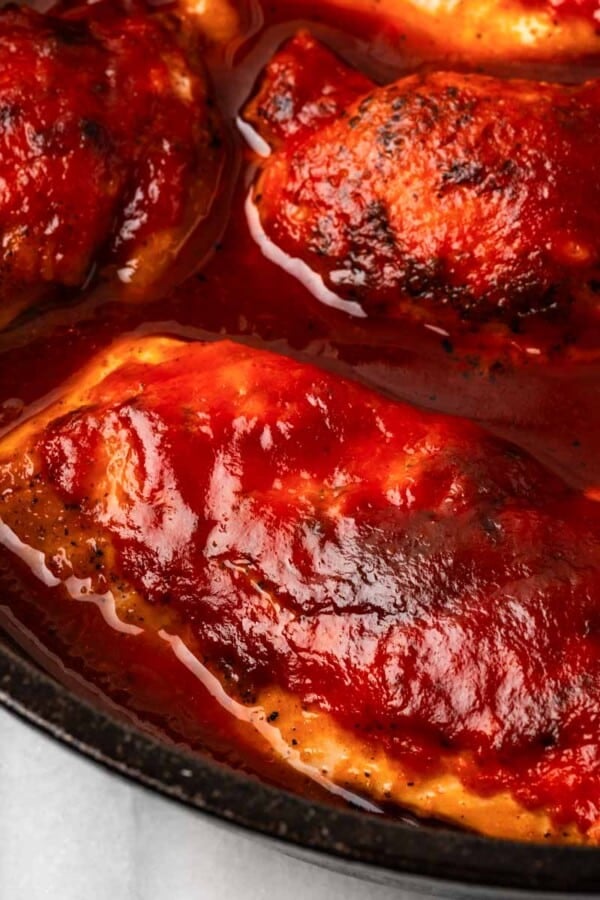
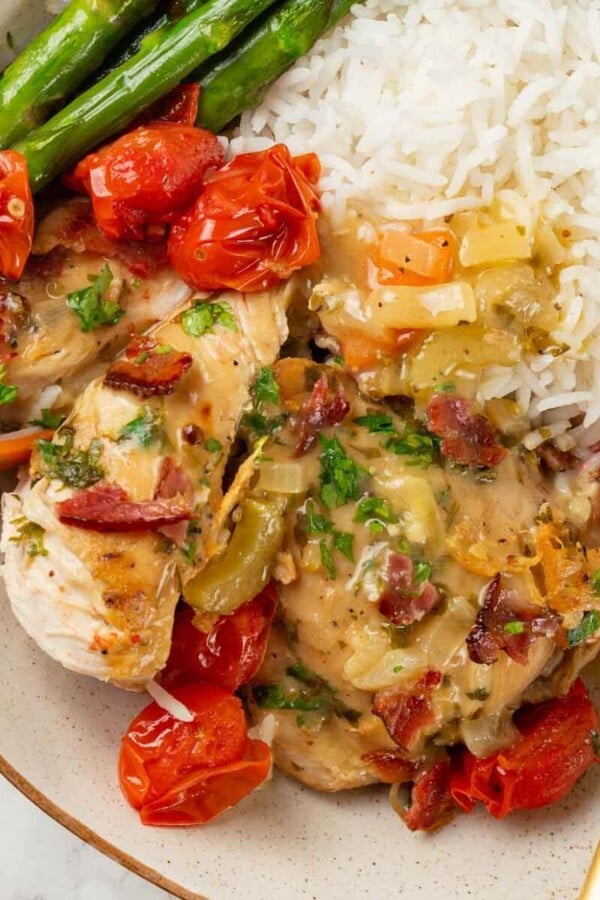

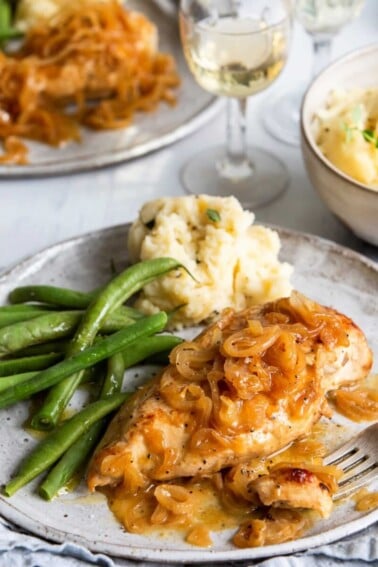


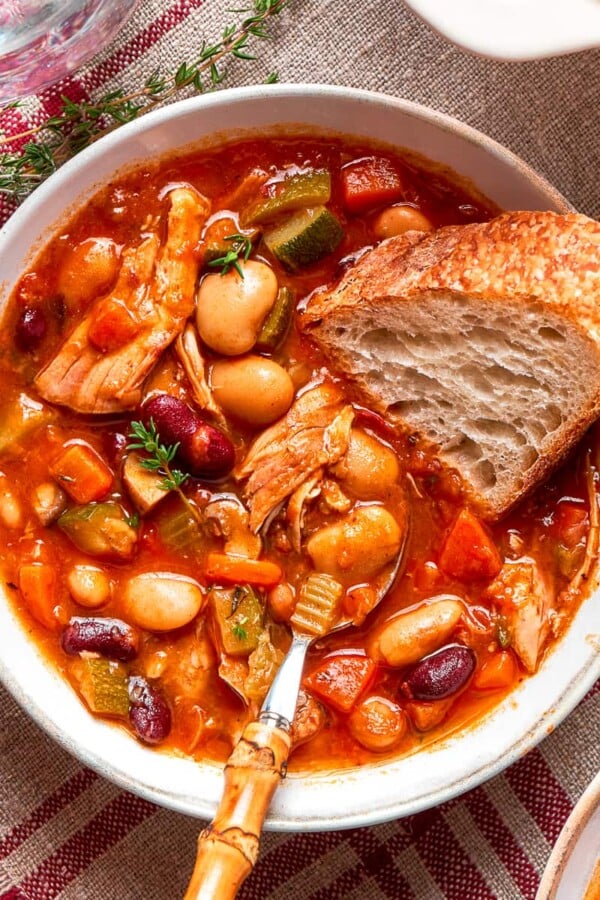









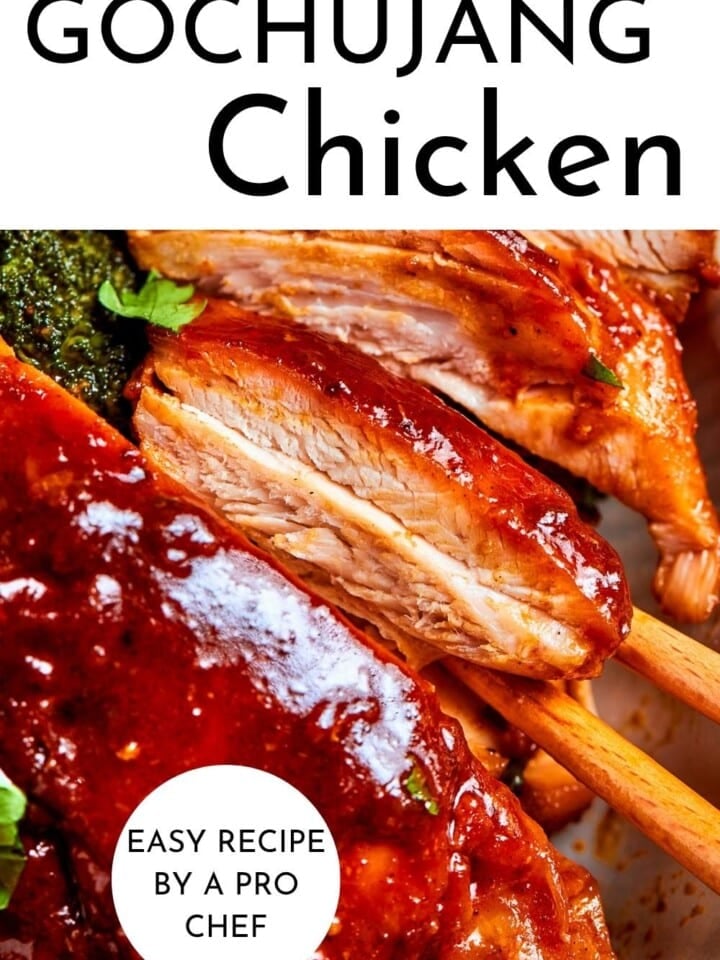
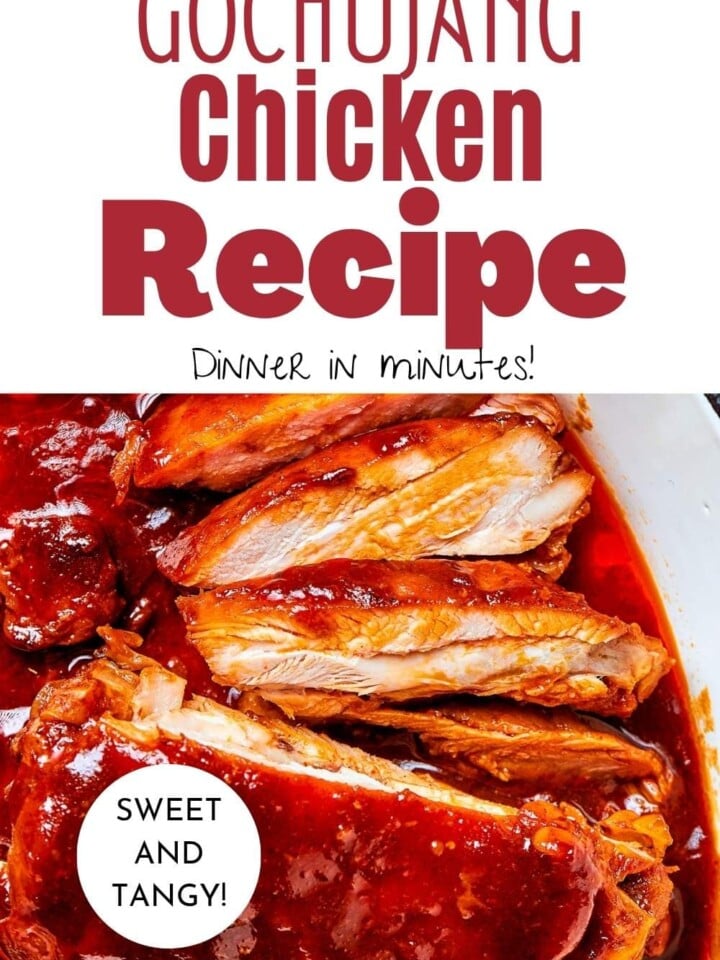
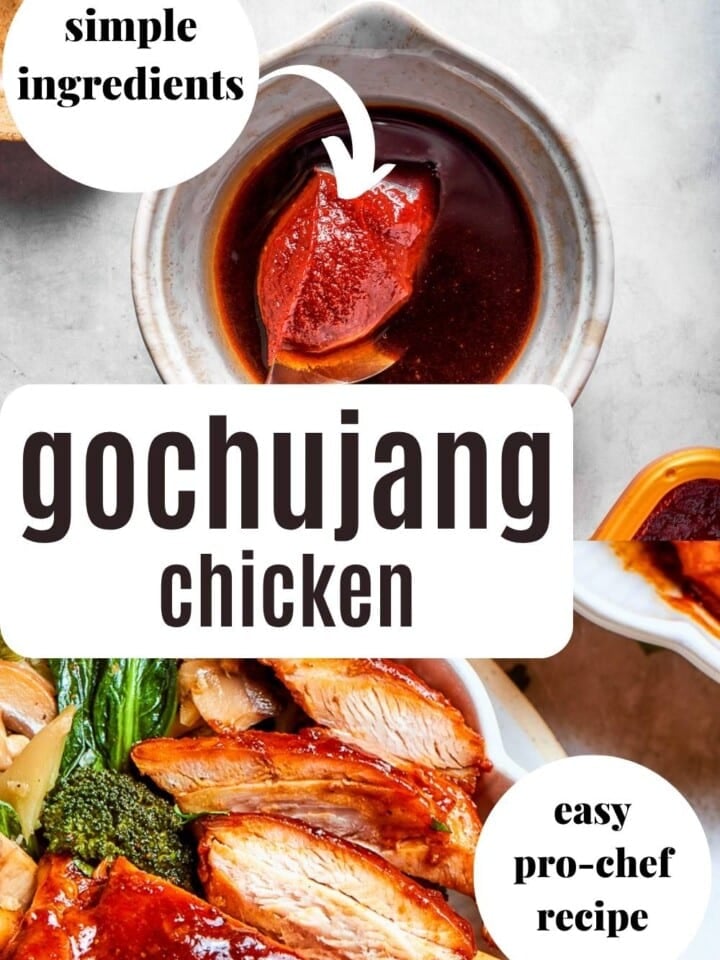
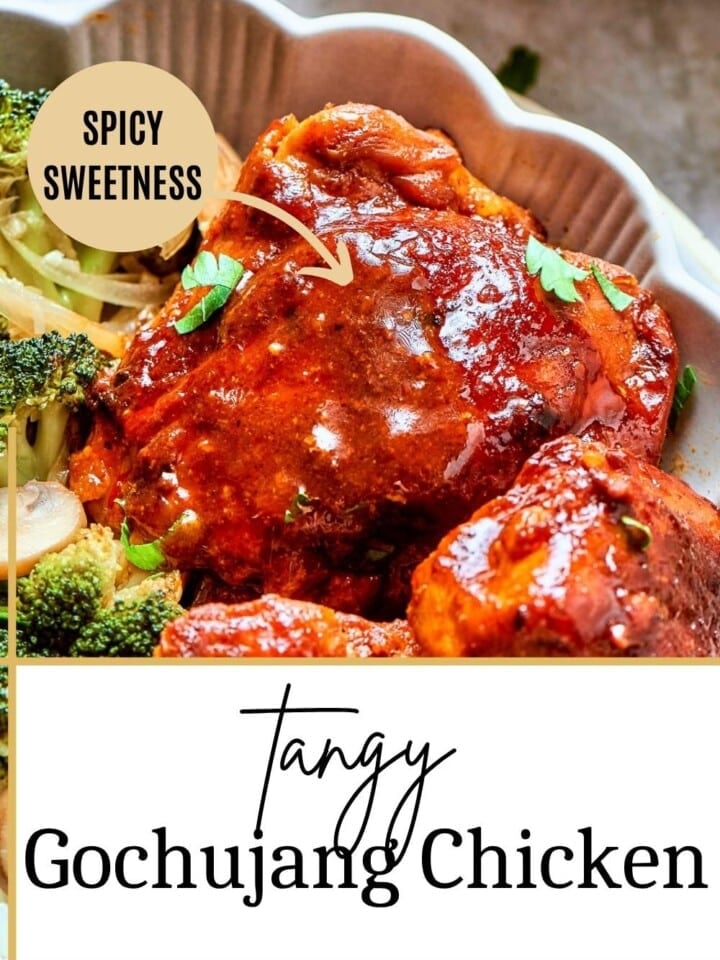
I fixed this last night and it’s delicious! I love Asian fusion and this was our first time trying a Korean recipe. It definitely will be a repeat in our house. Being older, I will prep ahead next time but it was definitely worth the time and effort. I was delighted in the flavor and heat from the Gochujang.
Hi Sandy! I’m so happy to hear that you loved it, and I’m honored it was your first Korean-style recipe! The prep-ahead plan sounds perfect for next time. Thank you for cooking with me!
I used all thighs and didn’t even need a knife at the table, they were that tender. The sauce had just the right amount of heat, and the veggies held their texture which was really nice with the bok choy. I’m always looking for dinners like this because I work late, so it’s important that it wasn’t super hands on. Checked all my boxes!